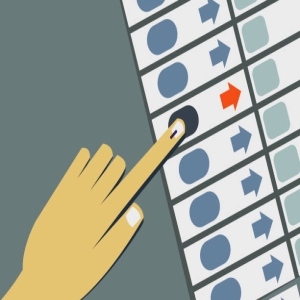
.jpg) Balvinder
Balvinder

Only a few weeks ago, during the ODI World Cup matches, almost every Indian was seemingly infected by the cricket virus, which, unfortunately, carried undercurrents of intense hatred and rivalry.
Hot discussions and debates raged unceasingly from homes to cafes, television news channels, and social media platforms. And all this continued, though now in mellowed tones, weeks after the end of the final match that India sadly lost.
Although I too often become an active part of every such oral masturbation, I am always amused at all such unproductive discussions. Because a majority of all such ‘vehla’ discussants, who act like experts, know very little of the subject they talk about and use their pithy prowess just as a pastime!
Since the announcement of a few state elections, all those cricket enthusiasts have begun wearing the hats of political analysts and election specialists. All that started with guesses and predictions of who would win and why did not end even after the end of elections and declarations of results. Debates and discussions still abound on this topic but with new turns and twists.
The latest focus, amongst the ‘vehla’ Indian discussants, now has shifted from winners and losers in the elections to the use, or misuse, to be accurate, of EVMs in elections. It is another story that, being of a highly technical nature, unlike cricket, not much is known on this matter.
I am not a tech-savvy person. However, I am assured that EVMs can sometimes be hacked, even by a non-technical person.
Every time an election was announced in the past, it would send an intense chill running through our (the government college teachers’) spines. Because many of us would be put on election duty as presiding officers, which none ever enjoyed.
Everyone would be running around helter-skelter to find ways to avoid the election duty, lest they be enlisted. Plans like getting a fake medical certificate would often fall flat.
I must admit that I always managed to bunk every arduous election duty except for one non-EVM election.
A disgruntled colleague put on election duty told me a curious hack story. It probably was during the general election of 1998 or the one held the very next year, in 1999, which was necessitated due to the fall of Mr Atal Bihari Vajpayee’s government.
He was put on duty at an election booth in some remote village on the outskirts of Chandigarh. Most voters registered to vote in that booth comprised migrant daily labourers living in makeshift ‘jugghis’.
While inspecting and managing the long queue outside his polling booth, he overheard a political party worker telling some voters an easy method, lest they waste time locating their desired candidates’ names or their party’s symbol from so many listed candidates. ‘Press the button on the top of the machine’, he instructed them!
Unfortunately for them, my colleague opposed the party they were promoting. He immediately entered the booth and rearranged the voting machine, placing it upside down. Thus bringing that particular party’s button to the bottom of the machine!
And his hack, he claimed, worked well!
On a serious note, one may ask what would drive any political party which knows the art of hacking the minds of illiterate Indian voters to indulge in the arduous and monumental task of hacking each and every electronic voting machine?
BALVINDER (Former PRINCIPAL of Chandigarh’s first Govt. College)